Posts Tagged ‘trains’
14th February
2020
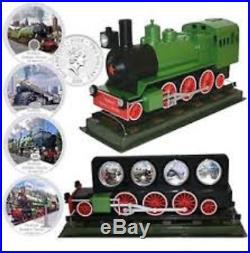

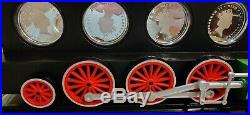
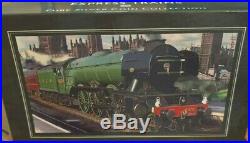
The Birth of the Railway. In 1812 Oliver Evans, a United States engineer and inventor, published his vision of what steam railways could become, with cities and towns linked by a network of long distance railways plied by speedy locomotives, greatly reducing the time required for personal travel and for transport of goods. Evans specified that there should be separate sets of parallel tracks for trains going in different directions. Unfortunately, conditions in the infant United States did not enable his vision to take hold. This vision had its counterpart in Britain, where it proved to be far more influential. William James, a rich and influential surveyor and land agent, was inspired by the development of the steam locomotive to suggest a national network of railways. He was responsible for proposing a number of projects that later came to fruition, and he is credited with carrying out a survey of the Liverpool and Manchester Railway. Unfortunately, he became bankrupt and his schemes were taken over by George Stephenson and others. However, he is credited by many historians with the title of Father of the Railway. Trans-Siberian Railway The Trans-Siberian Railway has long been an almost mythic experience. It is the longest continuous rail line, spanning eight time zones, with each run clattering along in an epic journey of almost six thousand miles (9289km) over one third of the globe. The Trans-Siberian Railway offers one of the very few classical once-in-the-lifetime trips which take the passengers through two continents with various landscapes and cultures. The Trans-Siberian also played a very direct role during parts of Russias history, with the Czechoslovak Legion using heavily armed and armoured trains to control large amounts of the railway (and of Russia itself) during the Russian Civil War at the end of World War I. As one of the only organised fighting forces left in the aftermath of the Imperial collapse, and before the Red Army took control, the Czechs and Slovaks were able to take use their organisation and the resources of the railway to establish a temporary zone of control before eventually continuing onwards towards Vladivostok, from where they emigrated back to Czechoslovakia through Americas and Germany. To further publicise the train, a recently-built Gresley A1 Class locomotive was named after the train, and put on display at the 1924 British Empire Exhibition. Due to a long-standing agreement between the competing West and East coast routes since the famous railway races of 1888 and 1895, speeds of the Scotch expresses were limited, the time for the 392 miles (631 km) between the capitals being a pedestrian 8h-15m. 20th Century Limited The 20th Century Limited was an express passenger train operated by the New York Central Railroad from 1902 to 1967, during which time it would become known as a National Institution and the Most Famous Train in the World. In the year of its last run, The New York Times said that it… Was known to railroad buffs for 65 years as the worlds greatest train. The train travelled between Grand Central Terminal in New York City and LaSalle Street Station in Chicago, Illinois along the railroads famed Water Level Route. The NYC inaugurated this train as direct competition to the Pennsylvania Railroads Broadway Limited, both lines intended for upper class as well as business travellers between the two cities. Making few station stops along the way and as few breaks for water and coal as possible, trains on this route routinely could complete the 960.7-mile journey in as little as 15½ hours (but usually in 16 hours), thus averaging at least 60 mph. The Orient Express The Orient Express is the name of a long-distance passenger train originally operated by the Compagnie Internationale des Wagons-Lits. Its route has changed many times, and several routes have in the past concurrently used the name (or slight variants thereof). Although the original Orient Express was simply a normal international railway service, the name has become synonymous with intrigue and luxury travel. The two city names most intimately associated with the Orient Express are Paris and Istanbul, the original endpoints of the service. Track Page Views With. Auctiva’s FREE Counter. The item “Niue set 4 coins Famous Express Trains proof colored silver 2010 Orient Express” is in sale since Wednesday, February 12, 2020. This item is in the category “Coins & Paper Money\Coins\ World\Australia & Oceania\Other Oceania Coins”. The seller is “silverbysilver” and is located in Philadelphia, Pennsylvania. This item can be shipped worldwide.
- Circulated/Uncirculated: Uncirculated
- Composition: Silver
- Modified Item: No
- Country/Region of Manufacture: Niue
- Certification: Uncertified
- Year: 2010
Comments Off
10th February
2020
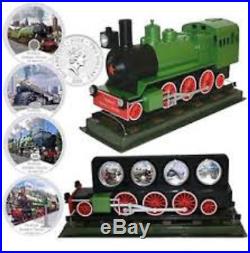
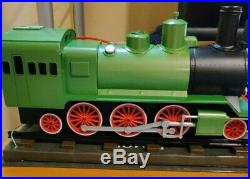
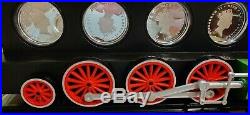
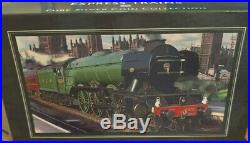
The Birth of the Railway. In 1812 Oliver Evans, a United States engineer and inventor, published his vision of what steam railways could become, with cities and towns linked by a network of long distance railways plied by speedy locomotives, greatly reducing the time required for personal travel and for transport of goods. Evans specified that there should be separate sets of parallel tracks for trains going in different directions. Unfortunately, conditions in the infant United States did not enable his vision to take hold. This vision had its counterpart in Britain, where it proved to be far more influential. William James, a rich and influential surveyor and land agent, was inspired by the development of the steam locomotive to suggest a national network of railways. He was responsible for proposing a number of projects that later came to fruition, and he is credited with carrying out a survey of the Liverpool and Manchester Railway. Unfortunately, he became bankrupt and his schemes were taken over by George Stephenson and others. However, he is credited by many historians with the title of Father of the Railway. Trans-Siberian Railway The Trans-Siberian Railway has long been an almost mythic experience. It is the longest continuous rail line, spanning eight time zones, with each run clattering along in an epic journey of almost six thousand miles (9289km) over one third of the globe. The Trans-Siberian Railway offers one of the very few classical once-in-the-lifetime trips which take the passengers through two continents with various landscapes and cultures. The Trans-Siberian also played a very direct role during parts of Russias history, with the Czechoslovak Legion using heavily armed and armoured trains to control large amounts of the railway (and of Russia itself) during the Russian Civil War at the end of World War I. As one of the only organised fighting forces left in the aftermath of the Imperial collapse, and before the Red Army took control, the Czechs and Slovaks were able to take use their organisation and the resources of the railway to establish a temporary zone of control before eventually continuing onwards towards Vladivostok, from where they emigrated back to Czechoslovakia through Americas and Germany. To further publicise the train, a recently-built Gresley A1 Class locomotive was named after the train, and put on display at the 1924 British Empire Exhibition. Due to a long-standing agreement between the competing West and East coast routes since the famous railway races of 1888 and 1895, speeds of the Scotch expresses were limited, the time for the 392 miles (631 km) between the capitals being a pedestrian 8h-15m. 20th Century Limited The 20th Century Limited was an express passenger train operated by the New York Central Railroad from 1902 to 1967, during which time it would become known as a National Institution and the Most Famous Train in the World. In the year of its last run, The New York Times said that it… Was known to railroad buffs for 65 years as the worlds greatest train. The train travelled between Grand Central Terminal in New York City and LaSalle Street Station in Chicago, Illinois along the railroads famed Water Level Route. The NYC inaugurated this train as direct competition to the Pennsylvania Railroads Broadway Limited, both lines intended for upper class as well as business travellers between the two cities. Making few station stops along the way and as few breaks for water and coal as possible, trains on this route routinely could complete the 960.7-mile journey in as little as 15½ hours (but usually in 16 hours), thus averaging at least 60 mph. The Orient Express The Orient Express is the name of a long-distance passenger train originally operated by the Compagnie Internationale des Wagons-Lits. Its route has changed many times, and several routes have in the past concurrently used the name (or slight variants thereof). Although the original Orient Express was simply a normal international railway service, the name has become synonymous with intrigue and luxury travel. The two city names most intimately associated with the Orient Express are Paris and Istanbul, the original endpoints of the service. Track Page Views With. Auctiva’s FREE Counter. The item “Niue set 4 coins Famous Express Trains proof colored silver 2010 Orient Express” is in sale since Wednesday, February 5, 2020. This item is in the category “Coins & Paper Money\Coins\ World\Australia & Oceania\Other Oceania Coins”. The seller is “silverbysilver” and is located in Philadelphia, Pennsylvania. This item can be shipped worldwide.
- Circulated/Uncirculated: Uncirculated
- Composition: Silver
- Modified Item: No
- Country/Region of Manufacture: Niue
- Certification: Uncertified
- Year: 2010
Comments Off
